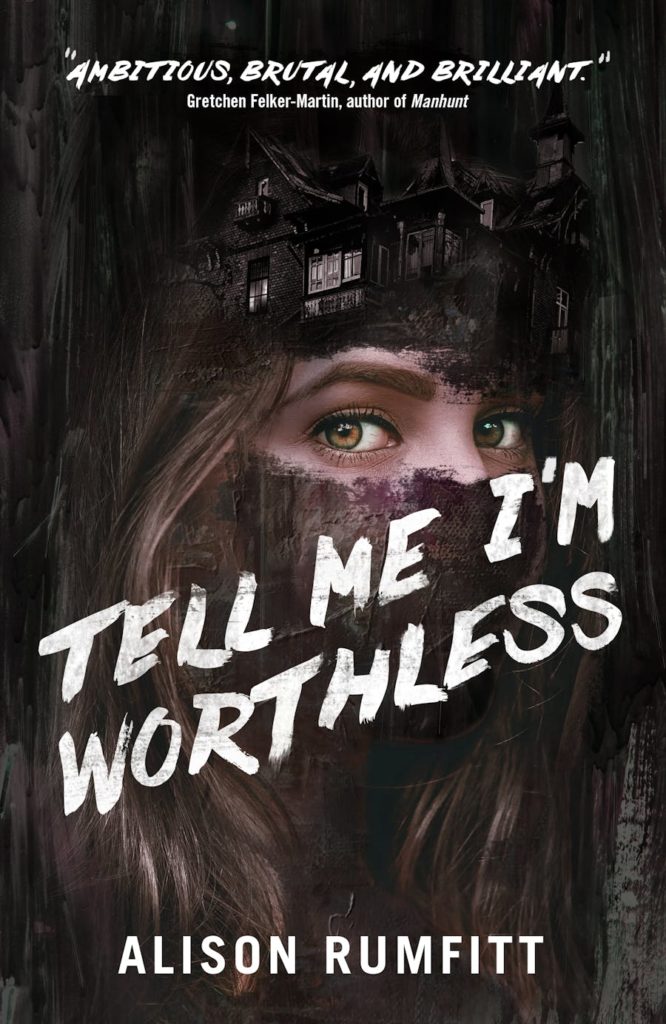
Who was the first storyteller to level up the haunted house? To put it another way: tales of houses haunted by restless spirits are unsettling enough. Who was the first person to see a haunted house as a place where existence itself could become malleable? As a concept, you can see wildly different manifestations of it in Mark Z. Danielewski’s novel House of Leaves and Dan Watters and Caspar Wijngaard’s comic book Home Sick Pilots. And then there’s Alison Rumfitt’s Tell Me I’m Worthless, which also nestles a kind of relentless, indescribable horror between the four walls of a home — but also finds a way to tap into some of the most urgent themes of the present moment.
Alternately: the haunted house in Rumfitt’s novel is in no way a punk house — but this is a book as raging and incandescent as the best punk rock.
Tell Me I’m Worthless begins years after three friends — Alice, Ila, and Hannah — paid a visit to a house reported to be haunted. When they set out for the house, Alice and Ila were a couple; after they crossed the threshold and went inside, something happened that caused Hannah’s disappearance and left Alice and Ila feeling horrifically betrayed by one another, each one feeling that the other had done something unforgivable.
The consequences of that have unsettling consequences. Alice moves through life feeling numb, while Ila has embraced a TERF ideology that’s left the two further estranged. (Alice is trans.) Mind you, this isn’t a novel where the real monster is shown to be bigotry; instead, Rumfitt’s novel is set in a world in which bigotry and prejudice fester into actual horrors, ones that can warp space and time and alter perceptions in horrifying ways.
Rumfitt has a fantastic eye for moments where the mundane curdles into something terrifying, as with this passage from the prologue, about a boy slowly descending into a morass of white nationalism:
Damp creeps through the wallpaper above his bed. He looks through the damp stain sometimes and thinks that he sees shapes in it. Eyes, a wide gaping mouth, opening up to swallow him whole.
This novel abounds with small moments like this, where the narrative briefly moves away from Alice and Ila to take in others on the periphery of the story. This isn’t just for stylistic reasons, though; a few seemingly digressive passages turn out to have a huge impact by the end of the novel. There’s a righteous anger at work here, but there’s also a precision in the way this story is told; it’s a combination one doesn’t usually see in any genre.
Gradually, Alice and Ila decide to see what waits for them at the site of their trauma. This leads up to an absolutely bravura scene, in which Rumfitt upends the narrative thus far and shifts the novel into a completely different gear, shifting the entire dynamic of the novel. The only thing I’ve read that makes sense as a comparison to this section would be the finale of Brian Evenson’s The Open Curtain — that transformation of a familiar narrative into something hallucinatory, disquieting, and relentless.
Rumfitt’s novel is not an easy read: characters say and experience awful things and confront the ways in which, despite their best intentions, they have deep-seated flaws and prejudices. There are plenty of ways to be scared by a novel; Tell Me I’m Worthless taps into almost all of them.
***
Tell Me I’m Worthless
by Alison Rumfitt
Tor Nightfire; 264 p.
Follow Vol. 1 Brooklyn on Twitter, Facebook, and sign up for our mailing list.
